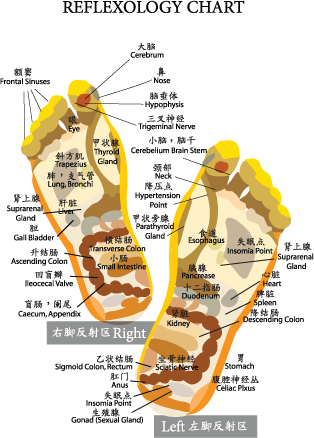
Foot reflexology is a simple, non-invasive method to help balance the body. It has been described as a natural therapy that requires the application of a specific type of pressure on particular areas of the feet. It is based on the principle that there are reflexes in the feet which correspond to every part of the body. Reflexology serves to relax, improve circulation and promote a general feeling of wellness.
History of Reflexology
Reflexology has been practiced for thousands of years in such places as China, Egypt, and India. In North America, it was Dr. William Fitzgerald, an ear, nose and throat specialist, who first introduced 'zone therapy' around the early 1900s. His ideas were advanced by Eunice Ingham, a physiotherapist, who developed techniques and a body map of the foot, which later became known as reflexology. Today, reflexology is increasingly becoming a popular form of natural therapy as it provides numerous benefits, particularly one of profound relaxation.
How Reflexology Works
Foot reflexology quite simply refers to the reflexes that have been mapped out in the foot. There are many different foot reflexology charts that show where the reflexes are for every part of the body. Reflexology is different than massage. It is thought that reflexology works through nerve endings whereas massage is applied to the muscles and soft tissue of the body. The actual technique is quite unique as it is meant to affect the reflex and not just the surface of the skin. A treatment should not be painful, though there may be uncomfortable or tender areas if your body is highly stressed. The more one applies pressure to those areas, the less tender they will become.
Benefits of Reflexology
1. relaxation and stress management
2. can aid in the relief of aches, pains and tension
3. can aid digestive and elimination difficulties
4. can help improve sleep patterns
5. can increase mental and physical well being